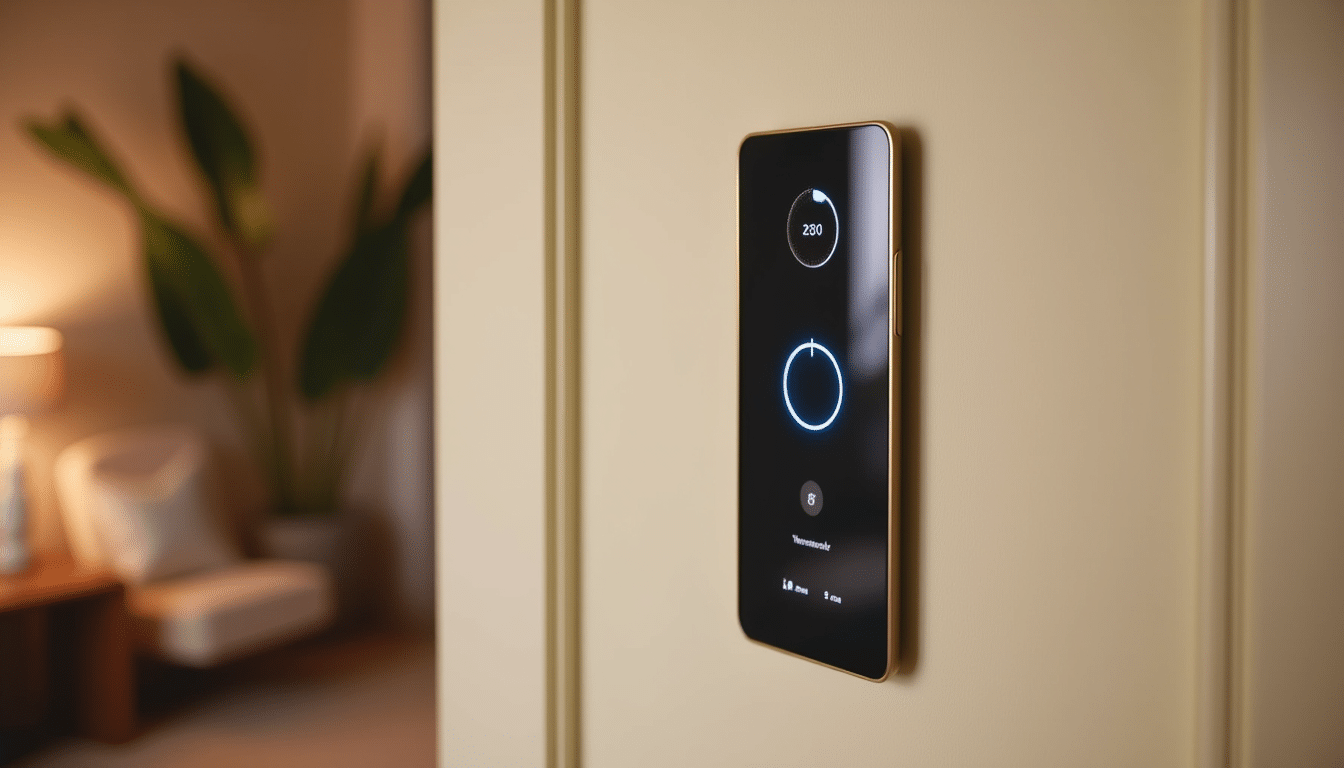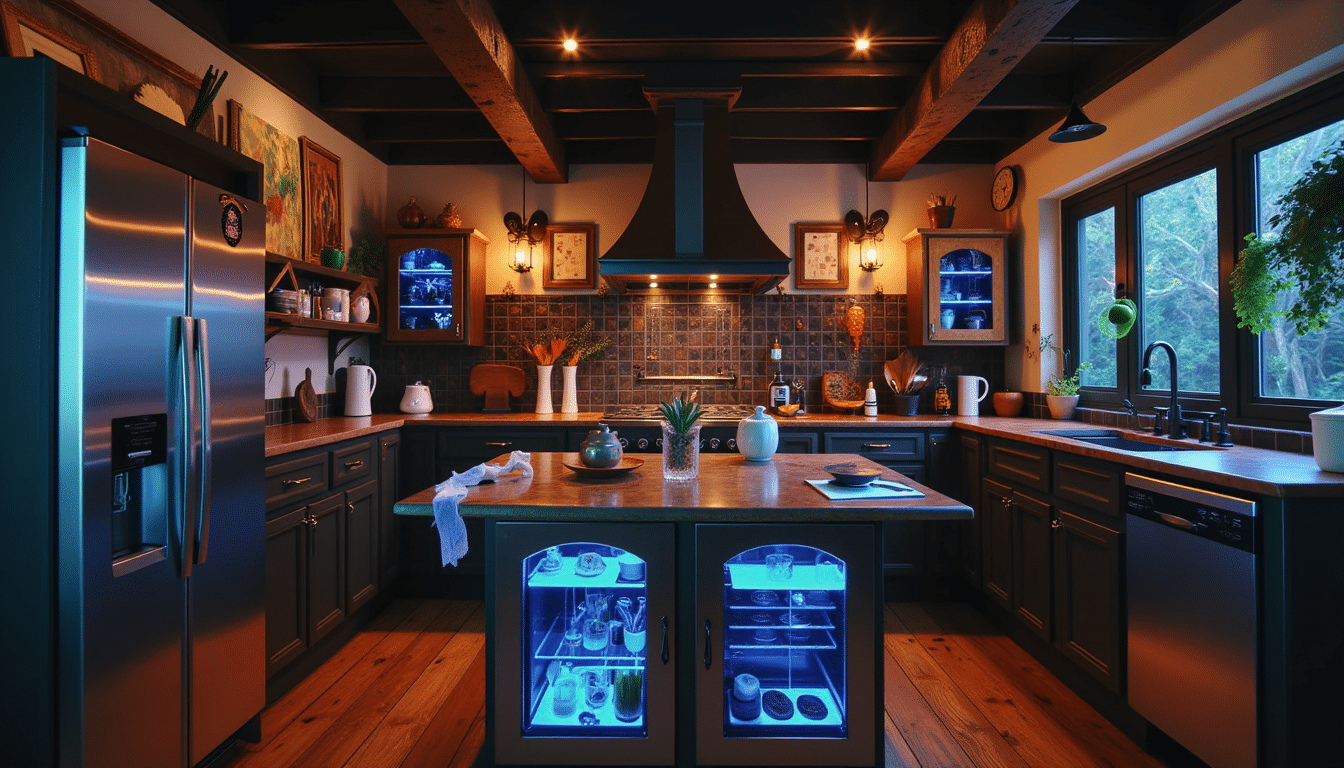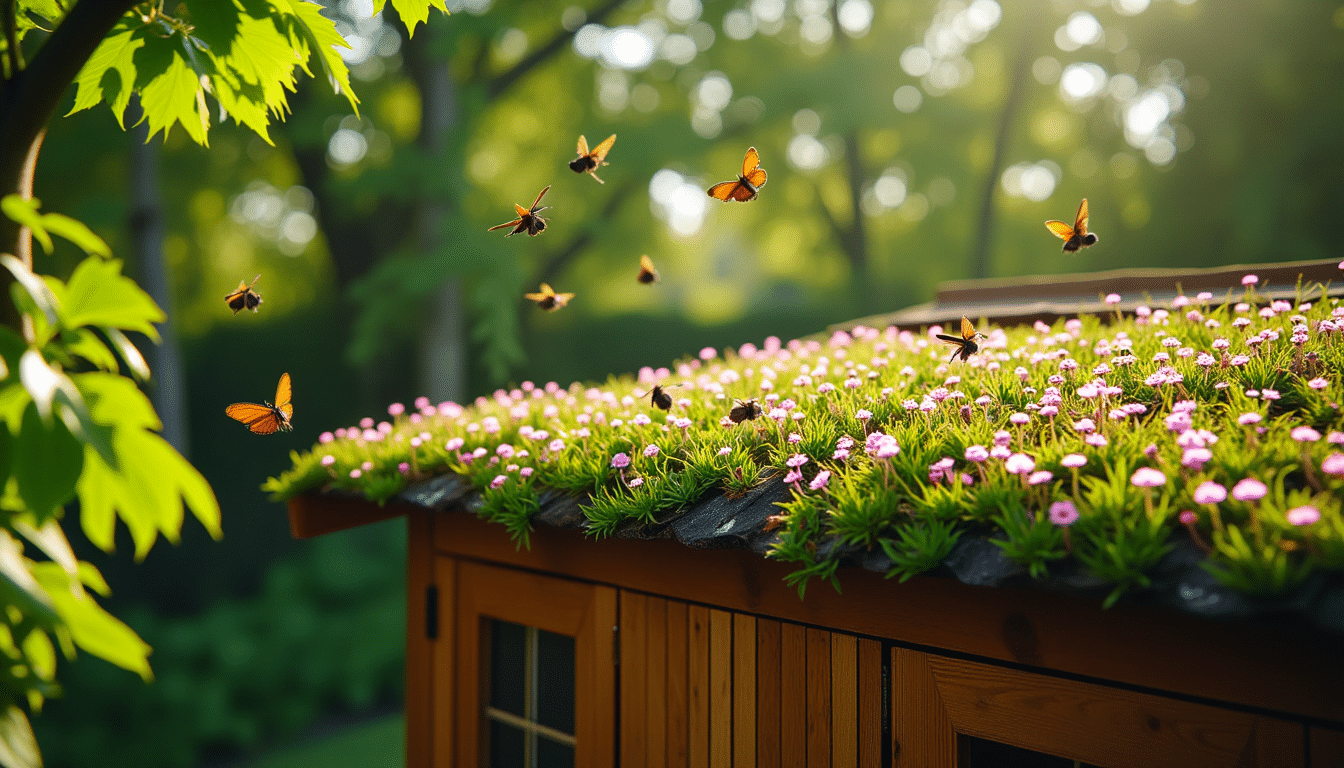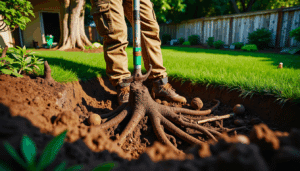1. Smart Heating Controls
Perhaps the easiest place to start your eco home journey is with smart heating controls. According to the Energy Saving Trust, heating accounts for about 55% of what you spend in a year on energy bills, so it makes sense to get it right.
Smart thermostats like Nest or Hive let you control your heating remotely and learn your habits to optimise energy use. They typically cost between £150-250 but can save around £75 per year on your energy bills. Mine paid for itself in just over three years.

What I love most is coming home to a warm house without having left the heating on all day. The system knows when I’m heading home and warms things up just in time.
Tip: Many energy suppliers offer discounted or even free smart thermostats as part of their tariffs, so check with your provider before purchasing.
2. Improved Insulation
I cannot stress this enough: proper insulation is the foundation of an energy-efficient home. It’s like putting a cosy jumper on your house!
In my Yorkshire cottage, adding loft insulation to the recommended 270mm depth cut my heating bills by about 20%. For an average home, this improvement costs around £300-400 but saves approximately £135 per year on bills.

- Cavity wall insulation (saving around £165 annually)
- Solid wall insulation (bigger investment but saves around £260 yearly)
- Floor insulation (saves approximately £65 annually)
The UK government periodically offers grants for insulation through schemes like the Energy Company Obligation (ECO), so it’s worth checking what’s available before starting work.
3. Solar Panel Installation
Solar panel costs have fallen dramatically in recent years, making them a much more accessible option for UK homeowners. My 4kW system cost £6,000 in 2024 and generates around 3,500 kWh of electricity annually.
With energy prices continuing to rise, the payback period for solar panels in the UK is now typically 10-15 years, but you’ll enjoy free electricity throughout their 25+ year lifespan.
The Smart Export Guarantee (SEG) also means energy suppliers must pay you for excess electricity you export back to the grid, creating a small additional income stream.
For more details on whether solar would work for your home, check out our comprehensive guide to solar panels.
4. Heat Pumps
Heat pumps represent the future of home heating in the UK, and government grants of £7,500 are currently available through the Boiler Upgrade Scheme to help with installation costs.
After installing an air source heat pump last year, my energy consumption for heating dropped by approximately 65% compared to my old gas boiler. While the upfront cost is significant (£8,000-£15,000 after the grant), the long-term savings and environmental benefits are substantial.
Heat pumps work particularly well with underfloor heating systems and in well-insulated homes, so consider this as part of a wider eco-renovation project.
5. Energy Efficient Windows and Doors
Replacing old windows with energy-efficient double or triple glazing dramatically reduces heat loss and dampens external noise—something I particularly appreciate living near a country road!
A typical home might spend £400-600 per year on heating that escapes through windows and doors. Modern A++ rated windows can reduce this heat loss by up to 85%.
While a full house of new windows might cost £5,000-£10,000, you can tackle this room by room to spread the cost. Start with north-facing rooms or those that feel particularly draughty.
Quick win: If new windows aren’t in your budget, even adding draught-proofing strips to existing windows and doors can save around £25 per year on heating bills.
6. Water-Saving Fixtures
Water-saving improvements are often overlooked but offer excellent value:
- Low-flow showerheads (£20-40) can reduce water usage by 50% without compromising shower quality
- Dual-flush toilets or cistern displacement devices save thousands of litres annually
- Tap aerators cost just a few pounds but cut water usage by 60%
For households on water meters, these simple changes can save over £100 annually on water bills while reducing energy used to heat water.
My personal favourite? The shower timer I installed that gently beeps after four minutes—it’s cut my shower time in half and saved a fortune on both water and heating!
7. Energy Efficient Appliances
When replacing appliances, focus on energy ratings. The difference between an A+ and A+++ rated fridge-freezer can be around £200 in energy costs over its lifetime.
I recently replaced my decade-old washing machine with an A+++ model that uses 57% less electricity and 40% less water than my old one. While it cost £150 more than a lower-rated alternative, it will save approximately £35 per year on running costs.

Tip: Always check the energy label when purchasing new appliances—the purchase price is only part of the total lifetime cost.
For more guidance on choosing energy-efficient appliances, see our article on smart appliance choices for eco-conscious homes.
8. LED Lighting
Switching to LED bulbs remains one of the simplest and most effective eco-improvements. LEDs use 90% less energy than traditional bulbs and last up to 25 times longer.
An average UK home with 40 bulbs could save around £55 per year by switching to LEDs. At approximately £2-5 per bulb, the initial investment is modest and quickly repaid.
Practical tip: Replace bulbs in most-used areas first to maximise savings, and consider smart LED systems that allow remote control and scheduling for additional efficiency.
9. Rainwater Harvesting Systems
Rainwater harvesting systems collect rainwater from your roof and store it for garden use, toilet flushing, or even laundry (with appropriate filtration).
Simple water butts connected to downpipes cost £20-100 and can collect thousands of litres annually—perfect for garden watering during increasingly dry UK summers.
More comprehensive systems with pumps and filters (£1,500-3,000) can supply water for toilet flushing and washing machines, potentially saving 50% of household water consumption.
My modest 200-litre water butt system keeps my vegetable garden thriving through summer without increasing my water bill.
10. Green Roof Installation
For the truly adventurous, green roofs offer excellent insulation, absorb rainwater, improve air quality, and create habitat for wildlife.
I added a small green roof to my garden shed two years ago using sedum mats, and it’s become a mini ecosystem attracting bees and butterflies. The insulation benefit means my shed stays cooler in summer and warmer in winter.

While costs vary significantly (£50-100 per square metre), green roofs can extend roof life by up to three times, provide additional insulation, and manage rainwater runoff—particularly valuable in flood-prone areas.
For flat-roofed extensions or outbuildings, this improvement adds biodiversity while helping regulate temperature and reducing energy needs.
Making It Happen: Financing Your Eco Improvements
Don’t let costs deter you—there are multiple ways to fund your eco-friendly home improvements:
- Government grants: Check the Simple Energy Advice website for current offerings
- Green mortgages: Many lenders now offer better rates for energy-efficient homes or to fund improvements
- 0% credit cards: For smaller improvements, these can provide interest-free financing for 12-24 months
- Staged approach: Tackle one improvement at a time, using savings from earlier improvements to fund later ones
Final Thoughts: Start Small, Think Big
After years of gradually greening my Yorkshire home, I’ve learned that eco-improvements work best as part of a considered plan rather than piecemeal changes.
Start with a proper energy assessment to identify where your home loses most energy. Then create a phased improvement plan targeting the biggest issues first. This methodical approach ensures each pound you spend delivers maximum environmental and financial benefit.
Remember that even small changes add up. My journey began with simple draught-proofing and LED bulbs before progressing to solar panels and a heat pump. Each step reduced my carbon footprint while making my home more comfortable and less expensive to run.
What eco-friendly improvements have you made to your home? Share your experiences in the comments below, and let’s learn from each other as we create more sustainable homes across the UK.
Ella Thompson lives in a renovated farmhouse in North Yorkshire where she’s been implementing sustainable improvements since 2018. When not writing for HomeWise, she can be found tending her kitchen garden or experimenting with home-made eco cleaning products.





